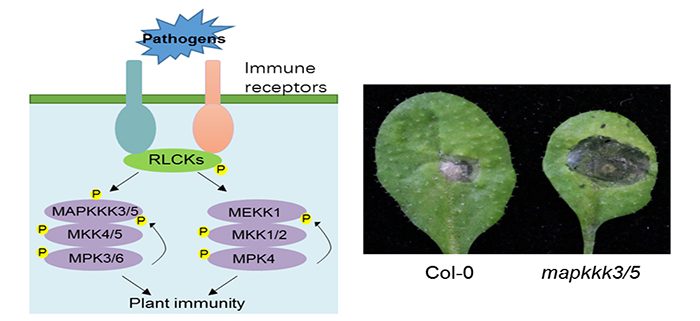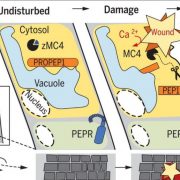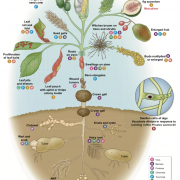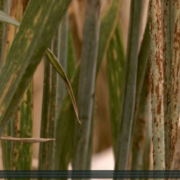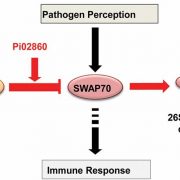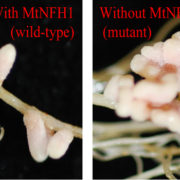Bridging the Gap Between Pathogen Detection and Defense Activation
Bi et al. provide a link between immune receptors and MAPK cascades. Plant Cell (2018) https://doi.org/10.1105/tpc.17.00981.
By G. Bi and J.-M. Zhou
Background: Plants use numerous immune receptors localized at the cell surface to detect invading pathogens. These receptors send a warning signal into the cell that triggers defenses to fend off pathogens. Much of this signal is relayed by sequential phosphorylation of a mitogen-activated protein kinase kinase kinase (MAPKKK), MAP kinase kinase (MAPKK), and MAP kinase (MAPK), termed a MAPK cascade. The MAPK then phosphorylates numerous substrate proteins for defense activation. How different receptors initiate the signal to activate MAPK cascades is poorly understood. Previous studies have shown that immune receptors relay signals through sequence-related protein kinases called receptor-like cytoplasmic kinases (RLCKs), but it is unclear whether and how RLCKs link multiple immune receptors to MAPK activation.
Question: We wanted to know which MAPKKKs are responsible for the activation of MPK3 and MPK6, two MAPKs that are key to plant disease resistance downstream of diverse immune receptors. In addition, we wanted to know whether and how RLCKs link immune receptors to the activation of MAPK cascades.
Findings: We found that two closely-related MAPKKKs, MAPKKK3 and MAPKKK5, function redundantly to activate MPK3/6 downstream of at least four immune receptors, and confer disease resistance to both bacterial and fungal pathogens. We further found that a group of RLCKs directly phosphorylates MAPKKK5 at a specific site shared by MAPKKK5 in diverse plant species. Furthermore, the activated MPK6 phosphorylates MAPKKK5 in a feedback loop that enhances the activation of the MAPK cascade and disease resistance. We show that genetic modification of these sites can lead to increased disease resistance. We additionally show that a second MAPK cascade is similarly regulated by RLCKs downstream of these immune receptors. These findings uncover a central mechanism through which different immune receptors activate MAPK cascades to confer disease resistance.
Next steps: This study uncovered key aspects of MAPKKK5 activation that enhance our understanding of MAPK cascades and will help us to identify additional components of their regulation. Furthermore, our finding that certain phospho-sites in MAPKKK5 can be modified to enhance disease resistance can be exploited for better protection of crop plants against diseases.
Guozhi Bi, Zhaoyang Zhou, Weibing Wang, Lin Li, Shaofei Rao, Xiaojuan Zhang, Frank L.H. Menke, She Chen and Jian-Min Zhou. (2018). Receptor-like cytoplasmic kinases directly link diverse pattern recognition receptors to the activation of MAPK cascades in Arabidopsis. Plant Cell https://doi.org/10.1105/tpc.17.00981.


